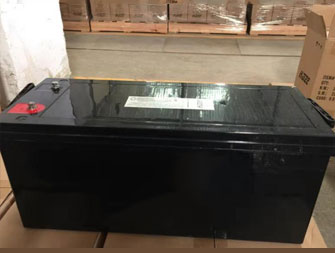Guidelines for Start-up Battery Repair
Observation and enquiry
1. Ask about battery life, whether long-term shelving (long-term shelving of batteries is prone to serious vulcanization, can first use low current desulfurization) or in-use batteries. Has it been repaired, whether there is serious self-discharge (if the self-discharge is serious, electrolyte needs to be replaced).
2. Observe whether the appearance is intact, whether there is leakage, whether the pole is damaged (such batteries can be repaired, can not be repaired). Whether the electrolyte in the battery has dried up or is very little (1.28g/cm3 dilute sulfuric acid can be added first to the upper and lower levels).
3. Observe whether the internal plate of the battery is seriously deformed (in which case the battery can be scrapped).
4. Use specific gravity to absorb the electrolyte in each cell. Repeat several times to observe whether the electrolyte is turbid (some electrolytes are clearer, we should ask whether the customer has supplied water or supplement fluid by himself).
Preliminary detection
1. Use a hydrometer to check whether the specific gravity between cells is balanced. In general, the repair rate of battery with serious single cell lag is relatively low.
2. Connect the battery to the high frequency activator (red clip to the positive and black clip to the negative), open the activator switch and observe the change of the voltmeter pointer: (1) Display the battery voltage: adjust the current knob (if the battery voltage is below 6V, the instrument will automatically protect, at this time, press the reset button, then adjust the current knob), observe the change of the ammeter and voltmeter. 。 If the current does not change and the voltage rises to about 40V, this kind of battery is usually seriously vulcanized, so it can be repaired by slow desulfurization with low current. If the current can be adjusted to a large extent, the battery can be charged by a large current for about three or four minutes, to observe whether there is smoke coming out of the injection hole, if there is any, the battery may be damaged, and scrap can be considered.
(2) Display the output voltage of the activator (the output voltage of the activator is about 48V). After a few minutes, if the voltage does not drop (excluding the fuse problem on the activation line), the battery can be judged to be open. If the voltage drops slowly, the battery is basically seriously vulcanized.
_Combined with the above factors, judge whether to receive batteries, do customer registration after receiving batteries, and clean the outside of batteries.

Repair steps
1. Charge the battery with a current of 0.1C (C denotes the capacity of the battery, for example, a battery with a capacity of 50A h, and the charging current is 0.1*50=5A). When the battery voltage is charged to 14.7V, the specific gravity of mono-acid is measured by a hydrometer and recorded. Then the current is adjusted to 0.05C for pulse desulfurization repair. The acid specific gravity of the cell is tested in about 10 hours. If the acid specific gravity is unchanged, the battery vulcanization fault can be eliminated. If the acid specific gravity increases but does not meet the requirements (the normal acid specific gravity value is 1.28g/cm3), the sulfur removal repair will continue. If the acid specific gravity does not change after a long time of sulfur removal and does not meet the requirements, the acid specific gravity will need to be redeployed. If the acid specific gravity reaches the requirement, the pulse desulfurization repair can be stopped.
If the battery is repaired by desulfurization and the self-discharge is not serious, the repair may be considered to be over.
2. After the above-mentioned operation, if the electrolyte is seriously turbid or self-discharging (positive and negative overlap caused by active material falling off and depositing at the bottom), the internal hard short circuit will be eliminated. Then it is necessary to replace the electrolyte to solve the problem.
Firstly, the discharge current of C10 (e.g. 50 10=5A) is used to discharge the battery to 0V, and the electrolyte is discharged (it can be poured into a plastic container with lime to avoid corrosion and environmental pollution). If there are granular brown substances in the poured electrolyte, the active substances in the cathode plate will fall off seriously, and such batteries can be discarded directly. After the electrolyte is poured out, the inside of the battery is cleaned with boiling water until the poured water is not turbid. Finally, the battery is cleaned with distilled water once more.
_Some batteries have tight assembly space, impurities deposited at the bottom can not be poured out from the injection hole, which requires punching at the bottom of the battery. Each cell is independent, so we need to punch six holes (when punching, we can pour out part of the internal electrolyte and leave the impurities in a corner) after cleaning, we can break out the hemp surface, and then use AB glue or other acid-resistant glue to seal. The electrolyte was injected 24 hours later.
3. After cleaning, 1.34g/cm3 electrolyte was injected, and then the battery was charged to 14.7V with 0.1C current by high frequency activator. Then it can be recharged for about 10 hours by lowering the current to 0.05C. Measure the specific gravity of each grid acid after full charge, and dispense it.
4. Measure the battery capacity after a day's rest. If it meets the standard, it can be submitted to customers for use. If the phenomenon of self-discharge still exists, it can be treated as scrap batteries.


